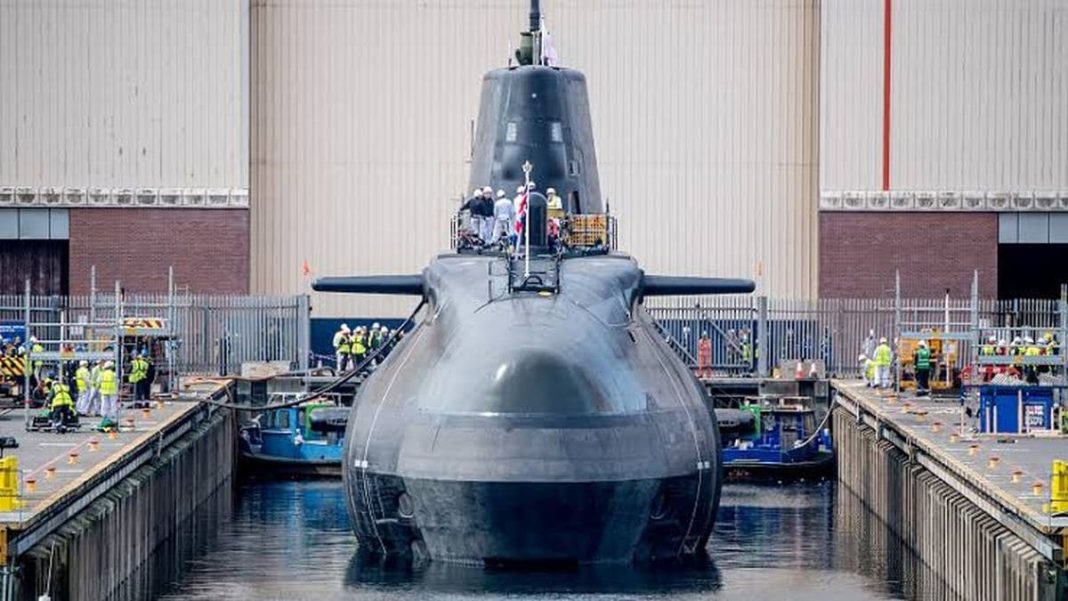India Successfully Tests K-4 Missile from INS Arighaat, Enhancing Nuclear Deterrence

India’s recent successful test of the nuclear-powered submarine INS Arighaat, which is armed with the K-4 submarine-launched ballistic missile (SLBM), highlights a significant milestone in its defense capabilities. This momentous event comes shortly after the ship’s commissioning in August 2024 and underscores India’s determination to strengthen its nuclear deterrence strategy.
The K-4 missile boasts an impressive range of 3,500 kilometers, enhancing India’s second-strike capability (SSC) and reinforcing its position as a formidable power within the Indian Ocean Region (IOR). This advancement is crucial given the escalating geopolitical tensions in both the Indo-Pacific and the IOR, regions increasingly populated by competing international interests. India’s expanding naval capabilities, particularly the integration of nuclear-powered submarines and sophisticated SLBMs, serve as a strategic advantage in navigating the complexities of this evolving landscape, ensuring a stronger deterrence while contributing to regional stability.
The K-4 missile’s test—carried out off the coast of Visakhapatnam—marks a significant milestone in India’s defense strategy as the country continues to refine its nuclear capabilities. The INS Arighaat is only the second submarine in India’s fleet to be equipped with the K-4 missiles, following the INS Arihant, which was commissioned in 2016. This recent test signifies India’s ability to conduct full-range assessments of its strategic weapons from operational submarines rather than limited platforms, expanding its tactical reach.
With the K-4 component, India’s nuclear triad, which includes land-based intercontinental ballistic missiles (ICBMs) and air-launched weapons, gains further credibility. The K-4 missile system is pivotal to India’s nuclear deterrence doctrine, allowing the country to retaliate against a first strike, in line with its no-first-use (NFU) policy. The submarine-launched nature of the K-4 ensures enhanced survivability and operational flexibility, as these submarines can operate undetected in secure waters.
The K-4’s impressive range allows India to target critical assets within both China and Pakistan, reinforcing its deterrent capability in an increasingly competitive environment. This development is particularly pertinent amid China’s military modernization efforts and its increasing naval presence in the Indian Ocean, fueled by its Belt and Road Initiative. With strategic chokepoints and maritime routes becoming focal points of contention, India’s advancements in submarine capabilities underline its commitment to maintaining strategic autonomy and a balance of power in the region.
On the global stage, India’s enhanced defense posture resonates with the interests of the United States, which has maintained a strategic presence in the Indo-Pacific to counterbalance China’s influence. The U.S. recognizes India as a crucial stabilizing force within the region, particularly regarding nuclear deterrence. Over the years, the U.S. has increased its cooperation with India through naval exercises, arms sales, and technology sharing, positioning both nations as allies against regional threats.
Conversely, China’s response to India’s advancements is one of concern, viewing the development of submarine-launched missile systems as a challenge to its own aspirations. The range of the K-4 missile extends strategically into Chinese territory, which significantly alters the security dynamics. As China enhances its naval capabilities and becomes more active in the Indian Ocean, India is compelled to strengthen its nuclear deterrent to safeguard its interests.
The successful test of the K-4 missile from INS Arighaat not only solidifies India’s military advancements but also enhances its standing as a key player in the Indo-Pacific and Indian Ocean regions. This capability to launch nuclear strikes from submarines augments India’s second-strike capability, ultimately positioning it as a significant force in regional security dynamics.
As the geopolitical landscape evolves, India’s strategic autonomy, combined with its strengthening defense capabilities, will ensure that it remains an influential actor amid the challenges posed by other global powers, particularly China and the United States. The K-4 missile test represents a critical component of India’s broader strategy to maintain peace and stability while deterring potential adversaries in an increasingly complex security environment.














Add Comment